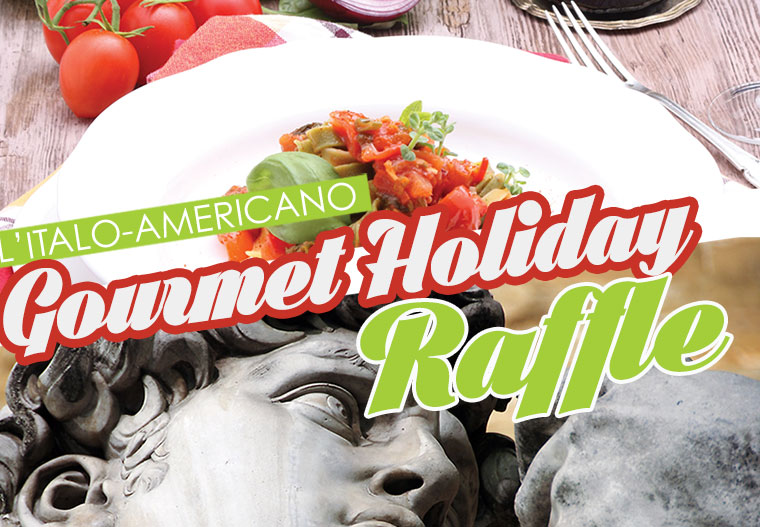La musica italiana is a powerful art that brings people together. It will never cost you a dime in overweight luggage fees to take home. It will transport you back to a memory, a place, or a time. No matter where Italians have emigrated, music has always invoked feelings: of home, of summer, of love for their country, even of love for or one another. To this day, many Italian Americans maintain ties to their roots through traditional folk music that brings them back to the small towns and villages they left behind.
For musician, performing artist, and teacher Alessandra Belloni, preserving the tribal and ethnic rhythms of southern Italy is a passion. Alessandra is a master of time travel. Using traditional instruments like the Remo tambourine, her performances of Italian folk music transport listeners back in time to the era before Italian unification. Roberto Benigni once said, “L’Italia è l’unico luogo al mondo dov’è nata prima la culture e poi la nazione,” which means, “Italy is the only place in the world where the cultura was born before the nation.” In fact, the Mezzogiorno, as Italy’s southern regions stretching from Rome to Sicily are affectionately called, played a significant role in inciting the first revolutionary riots that would eventually launch the peninsula into unified statehood.
Originally from Rome, Alessandra first started playing the traditional Southern Italian tambourine and frame drum at age 23. After studying music and performance for several years in New York City, she traveled to Italy, where she joined forces with other female musicians and vocalists. The “women work” chants she learned there, originating in Naples, Puglia, Calabria, and Sicily, inspired her to explore and study traditional Italian folk music.
Her discovery was timely, as the 1970’s saw a revival of interest in “Musica e Teatro Popolare,” or Southern Italian folk art and culture. As environmental awareness became trendy at that time, the image of the Black Madonna gained popularity. She is a dark-skinned Virgin Mary, an icon that blends Catholic, Roman, and Pagan beliefs. Many of the traditional tammurriata songs of Campania and Sicily honor, celebrate and give thanks to her for a good harvest and fertile farms.
Since the 70’s, Alessandra has traveled extensively throughout Italy’s Southern regions doing field research, interacting with experienced musicians, and learning lyrics and acoustic harmonies. Today, she shares her passion for this music through performing with her band, I Giullari di Piazza, and teaching classes called “Rhythm is the Cure” at NYC’s Italian American Museum in Little Italy. Her students learn to play the traditional Remo tambourine and learn to dance the Tammurriata, Tarantella, and Pizzica. Her next concert in New York is on December 22, a Winter Solstice-themed performance at Theatre for the New City.
Alessandra believes that this music helped Southern Italian women challenge the norms of their traditionally male-dominated society. She also discovered that the Italian frame drum was connected to female dance rituals as far back as the ancient Egyptian empire. Today there is a sense of camaraderie among the men and women who drum and keep tempo.
“I realized that one of the beauties of the tammurriata, now as in ancient times, is the male and female energy coming together in a primordial celebration of life, fertility, love. The male and female way of playing the drum, the male and female castanets, the male and female movements of the arms, the male and female style of singing – all express the beauty of true balance and harmony between the sexes.”
In addition, Alessandra boasts of the meditative and healing powers of playing the Remo tambourine. She faced a serious health problem in 1991, and Western medicine was unable to cure her.
“I had studied the ancient female dance, Pizzica Tarantula, and its ability to heal emotional and physical ailments. I think that through dance, song, and prayer to the Black Madonna, my mind entered the hypnotic state of tarantate, or the symbolic form of cleansing demonstrated in the Tarantata dance. This was a miraculous experience, and convinced me that the tarantella, one of the most ancient forms of music and dance therapy, still holds its power today.”
After taking a class with Alessandra, one feels that this traditional Italian folk music and dance embodies the essence of the humble beginnings, healing love, and an almost tribal lifestyle that is at the heart of Southern Italian culture. Ancient myths, diverse dialects, and romantic dance rhythms teach Italian Americans to connect with their heritage at a much more visceral level than ever before.



























